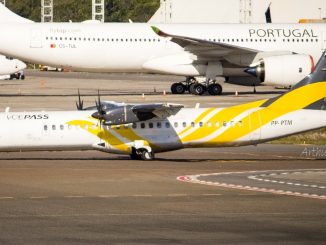
Struggling Brazilian carrier Avianca Brazil has cancelled more than 1000 flights, following a rapid reduction of aircraft in its fleet.
As of today, the airline operates an average of only 37 daily flights, using five aircraft, Prensa Latina reports. Last week, Avianca Brazil was forced to return 18 aircraft to leasing companies over unpaid leasing fees. This caused the cancellation of more than 1,045 domestic flights. Back in December 2018, the carrier was operating a fleet of more than 50 aircraft.
The aircraft repossessions through Avianca Brazil’s lessors were authorized by the civil aviation authority of Brazil (ANAC), following a Sao Paulo court ruling earlier this month. In December last year, American leasing company Aircastle became the first party to repossess a number of aircraft from the airline. Shortly after, the indebted carrier entered a bankruptcy restructuring, in order to keep operating while dealing with financial claims.
Many current and former assets of Avianca Brazil, including take off and landing slots at major Brazilian airports and returned aircarft, will now be auctioned to other airlines. This is the only realistic option for the troubled carrier to generate short-term capital and pay off its debt. Competitor Azul was quick to sign deals to take over a number slots and aircraft, but was later pushed back when GOL and LATAM Brazil, the two largest airlines in the country, entered the bidding process.
Avianca Brazil, officially Oceanair Linhas Aéreas S/A, is owned by Sao Paulo-based Synergy Group, but is not part of the Colombian Avianca Holdings, despite using the same name and branding. Avianca Holdings itself has stated that it is concerned over the status of it’s Brazilian affiliate. Even though the two companies are not directly connected, the current situation of Avianca Brazil causes damage to the image of the whole Avianca brand, which operates subsidiaries in most South American, and several Central American countries.

Jakob Wert is an aviation journalist from Germany. He built up the website IFN.news and is the Editor-In-Chief of International Flight Network.



